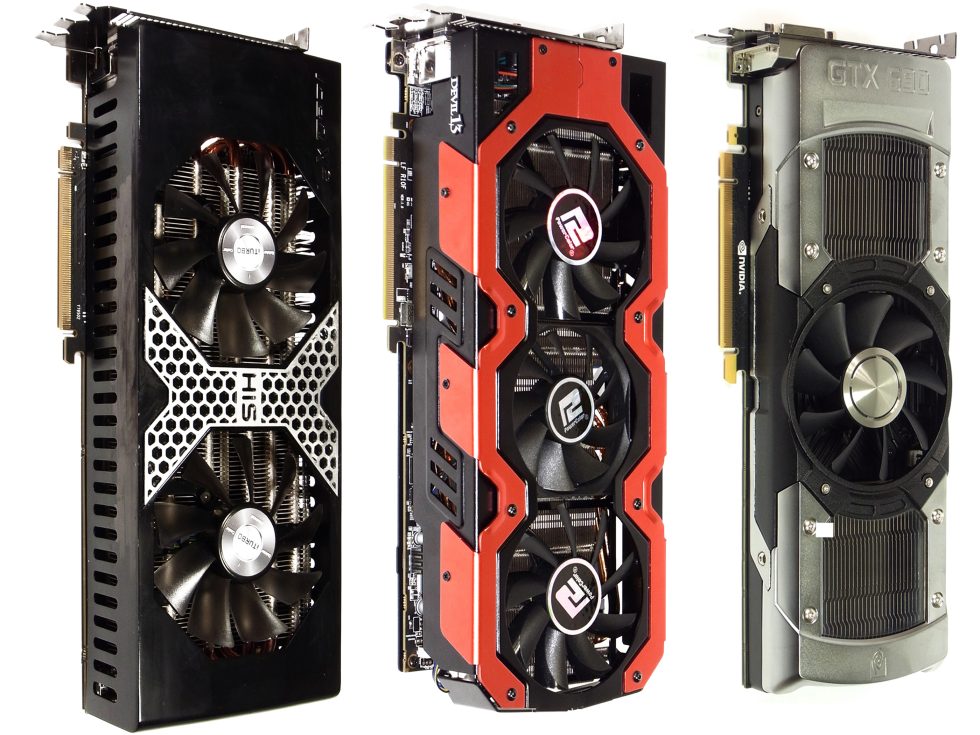As we had already reported in advance, we were the only editorial team to test the new flagship from HIS and also try to award the performance crown of the fastest graphics card in 2012 in a direct comparison. Nevertheless, we have to make a small reservation first, because the two test samples provided to us by HIS are still representatives of a very limited small series and not retail cards that can already be purchased in stores. We will of course include this limitation in the final assessment.
If you look at the GeForce GTX 690 and the Radeon HD 7990 from PowerColor (which is also sold by Club3D and VTX 3D in a similar form), which are already on the market, you could assume a performance tie between the GeForce and Radeon dual-GPU cards, at least for the higher clocked Devil 13 from PowerColor, until now. HIS, on the other hand, has not yet followed up the first announcement at Computex 2012 with concrete actions and has waited for the time being. However, this is to change now, and the company wants to bring the card, which is actually ready for series production, onto the market after all. In return, with a bit more clock, we also set ourselves another, quite ambitious goal: namely, to be faster than the rest. First, let’s look at the initial situation:
| HIS HD 7970 X2 |
PowerColor HD 7990 |
EVGA GeForce GTX 690 |
|
|---|---|---|---|
| Shader Units | 2x 2048 | 2x 2048 | 2x 1536 |
| GPU clock | 1050 MHz | 925 MHz / 1000 MHz (BIOS) | 915 MHz +Turbo |
| ROPs | 2x 32 | 2x 32 | 2x 32 |
| GPU | 2x Tahiti XT | 2x Tahiti XT | 2x GK104 |
| Transistors | 2x 4310M | 2x 4310M | 2x 3500M |
| Memory size | 2x 3072 MB | 2x 3072 MB | 2x 2048 MB |
| Memory bus | 2x 384 bit | 2x 384 bit | 2x 256 bit |
| Memory clock | 1500 MHz | 1375 MHz | 1502 MHz |
So on paper, the challenger would already have quite good cards. Whether the project ultimately succeeded, whether and how the micro-stutters can be controlled, and who will really come out on top in the end – that is exactly what we want to clarify in today’s test.
Test setup for our measurements
We first measure and benchmark all cards in our 2012 VGA test system and then also test the installation and operation in the closed case.
| CPU | Intel Core i7-2600K @4.5 GHz |
|---|---|
| Mainboard | Gigabyte Z68X UD7 B3 |
| Memory | 4 x 4 GB Kingston HyperX 1600 |
| CPU Cooler | Coolermaster TCP 800 with Noiseblocker eLoop B12-PS (PWM) |
| SSD | Kingston V200+ 480 GB |
| Power supply unit | Corsair AX 1200i |
| Operating system |
Windows 7 x64 Ultimate |
| Driver | Catalyst 12.11 (Beta) and Catalyst 12.9 GeForce 306.97 WHQL |
| Temperature | 22 °C constant (air-conditioned) |
| Test housing | NZXT Phantom 820 |
The comparison between the benchmarks with Catalyst 12.9 and the Catalyst 12.11 released today, which is supposed to unleash real performance boosts in some applications, will be interesting in the next sections. It will be very interesting for us to find out how these bolides will perform in a closed system, because well over 500 watts of waste heat from the graphics cards alone are quite a number and not so easy to dispose of.
- 1 - Introduction and overview
- 2 - The challenger: HIS 7970 X2
- 3 - The efficient: EVGA GTX 690
- 4 - The beauty: PowerColor 7990 Devil 13
- 5 - Synthetic benchmarks
- 6 - Gaming benchmarks (Catalyst 12.11)
- 7 - Micro stuttering: the current situation
- 8 - Micro stuttering: AFR render methods
- 9 - Micro stuttering: adaptive VSync (Nvidia)
- 10 - Micro stuttering: dynamic VSync (AMD)
- 11 - Power consumption and temperatures
- 12 - Fan speed and noise (with videos)
- 13 - Summary and conclusion


































13 Antworten
Kommentar
Lade neue Kommentare
Urgestein
1
Urgestein
Mitglied
Urgestein
Urgestein
Mitglied
Urgestein
Urgestein
1
Mitglied
Neuling
Urgestein
Alle Kommentare lesen unter igor´sLAB Community →